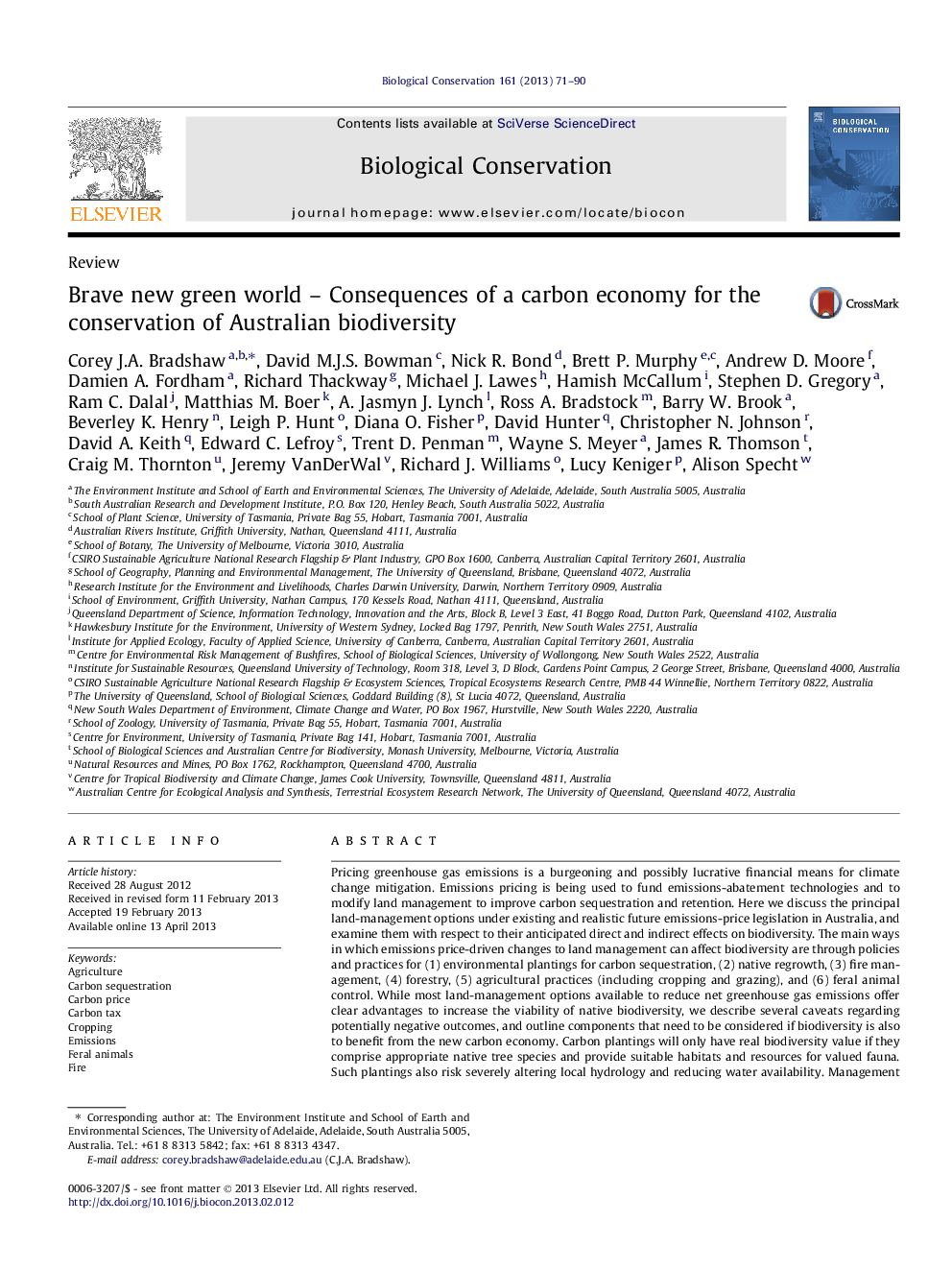| کد مقاله | کد نشریه | سال انتشار | مقاله انگلیسی | نسخه تمام متن |
|---|---|---|---|---|
| 6300696 | 1617940 | 2013 | 20 صفحه PDF | دانلود رایگان |

Pricing greenhouse gas emissions is a burgeoning and possibly lucrative financial means for climate change mitigation. Emissions pricing is being used to fund emissions-abatement technologies and to modify land management to improve carbon sequestration and retention. Here we discuss the principal land-management options under existing and realistic future emissions-price legislation in Australia, and examine them with respect to their anticipated direct and indirect effects on biodiversity. The main ways in which emissions price-driven changes to land management can affect biodiversity are through policies and practices for (1) environmental plantings for carbon sequestration, (2) native regrowth, (3) fire management, (4) forestry, (5) agricultural practices (including cropping and grazing), and (6) feral animal control. While most land-management options available to reduce net greenhouse gas emissions offer clear advantages to increase the viability of native biodiversity, we describe several caveats regarding potentially negative outcomes, and outline components that need to be considered if biodiversity is also to benefit from the new carbon economy. Carbon plantings will only have real biodiversity value if they comprise appropriate native tree species and provide suitable habitats and resources for valued fauna. Such plantings also risk severely altering local hydrology and reducing water availability. Management of regrowth post-agricultural abandonment requires setting appropriate baselines and allowing for thinning in certain circumstances, and improvements to forestry rotation lengths would likely increase carbon-retention capacity and biodiversity value. Prescribed burning to reduce the frequency of high-intensity wildfires in northern Australia is being used as a tool to increase carbon retention. Fire management in southern Australia is not readily amenable for maximising carbon storage potential, but will become increasingly important for biodiversity conservation as the climate warms. Carbon price-based modifications to agriculture that would benefit biodiversity include reductions in tillage frequency and livestock densities, reductions in fertiliser use, and retention and regeneration of native shrubs; however, anticipated shifts to exotic perennial grass species such as buffel grass and kikuyu could have net negative implications for native biodiversity. Finally, it is unlikely that major reductions in greenhouse gas emissions arising from feral animal control are possible, even though reduced densities of feral herbivores will benefit Australian biodiversity greatly.
⺠Australia's new carbon price will have profound implications for land-use change. ⺠Major changes will arise from environmental plantings and regrowth & fire management. ⺠Other changes will affect forestry, agriculture and feral animal control. ⺠Most anticipated land-use changes should benefit biodiversity. ⺠Negative biodiversity outcomes could arise if changes focus exclusively on carbon.
Journal: Biological Conservation - Volume 161, May 2013, Pages 71-90